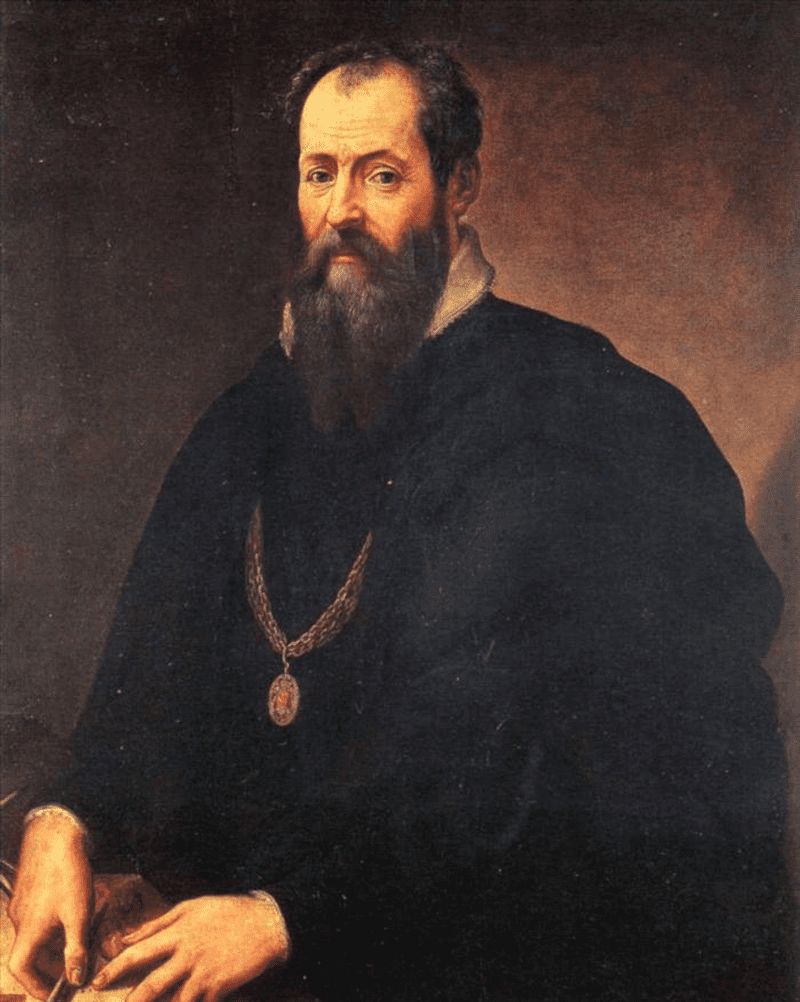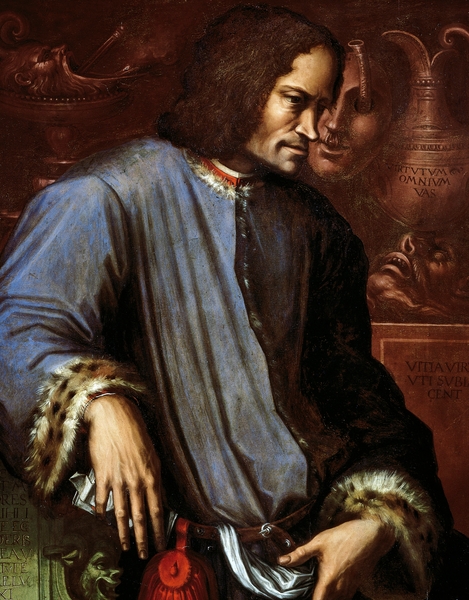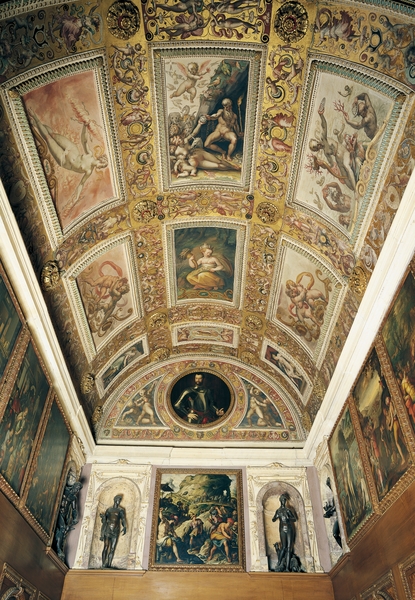Giorgio di Antonio Vasari, “Born in 1511… in the town of Arezzo”(New York Times) was a successful Renaissance Man. He was a painter, architect, and famously known as the first biographical, art -historian. His book “The Lives of the Artists” – a “monumental encyclopedia” (BBC) about all the great artists of the Renaissance has had a profound impact on what we know about artists from that time today, and art history as a whole.

Giorgio Vasari was a powerful and transformative storyteller, at times he bordered on methodical fabrications and amplified his stories, but nonetheless his books are highly influential chronicles of more than 200 Italian artists in his time, and perhaps they are first appearance of what we know as the subject of art history. Some of his most central subjects being Leonardo, Raphael and his good friend Michelangelo of the “Golden Age”. Vasari believed the artists that came before him, had surpassed the successes of Antiquity and he regarded them as his quintessential heroes. Vasari was deeply influenced by these painters but because he has been such an integral narrator to art histories successes (regardless of his fabrications), his life as a painter can easily be overlooked.

Vasari was one of art history’s most important characters; he was a sublime painter mastering in Frescos throughout the Mannerist period but also an avid businessman who prioritized the economy of painting. Vasari is said to be the pioneer of studio production, typically relying on a team to accomplish what he did in his lifetime. He was a compulsive overachiever who gained notable peers such as Michelangelo, Titian and Giorgione as well as a significant following. Vasari was more of a businessman than his predecessors, motivated significantly by fortune and fame and was highly sought after with commissions from patrons like the Medici throughout his lifetime.

Vasari rose to his fame through working with the prolific Medici family, specifically through the commissions of Cosimo. He quickly gained became an important member of Italy’s elite and is famous for attributing this moment in to to the “rebirth” of “rinascita”. But perhaps the most important thing to understand about Vasari is his contributions to his era. Besides his renowned biographies that provided him much fame and financial success. Vasari was an inspiration to his pupils and even founded a design and art centre alongside Michelangelo. He was a meticulous art collector who collected a profound amount of valuable art and a well known architect, developing mannerist churches across Tuscany and Florence.


Vasari’s most famous artwork is without a doubt featured in the “Room of Elements”, Palazzo Vecchio, Florence, Italy, 16th century; a series of his most well known frescos, featured alongside the works of his heroes, Da Vinci and Michelangelo’s (unfinished) work “The Battle of Anghiari” and “The Battle of Cascina” in the “Il Salone dei Cinquecento (Hall of the Five Hundred)” in the The Palazzo Vecchio (The Art Story).
Sources:
“Vasari, Giorgio (1511 – 1574).” The Encyclopaedia of the Renaissance, edited by Thomas Goddard Bergin, and Jennifer Speake, Market House Books Ltd, 1st edition, 1987. Credo Reference
https://www.theartstory.org/artist/vasari-giorgio/artworks/
“BBC – Travels with Vasari – Part two (final);” https://www.youtube.com/watch?v=nSkCpvnn8HE
Collector of Lives; Giorgio Vasari https://www.nytimes.com/2017/12/01/books/review/collector-of-lives-giorgio-vasari-biography-rowland-charney.html
Images:
https://www.theartstory.org/artist/vasari-giorgio/artworks/
“Cosimo I leaving for exile, fresco by Giorgio Vasari (1511-1574). Salone dei Cinquecento (Hall of the Five Hundred), Palazzo Vecchio, Florence. Italy, 15th century.” Bridgeman Images: DeAgostini Library, edited by Bridgeman Images, 1st edition, 2014. Credo Reference,
“Frescoes by Giorgio Vasari (1511-1574), Room of Elements, Palazzo Vecchio, Florence, Italy, 16th century.” Bridgeman Images: DeAgostini Library, edited by Bridgeman Images, 1st edition, 2014. Credo Reference,
“Ceiling detail, Studiolo of Francesco I, by Giorgio Vasari (1511-1574). Palazzo Vecchio, Florence. Italy, 16th century.” Bridgeman Images: DeAgostini Library, edited by Bridgeman Images, 1st edition, 2014. Credo Reference,

Che,
Wow a very impressive first blog post. Loved reading it and especially enjoyed your personal approach through your ample research and smooth writing. An inspiration to choose Vasari as well. This is precisely what I’m looking for in these posts and you have delivered. Loved the title “The Original Renaissance Gossip Queen” Looking forward to more of this moving forward.
Jeff
Hi Jeff,
Thank you very much for the feedback I’m glad you liked it!
Che